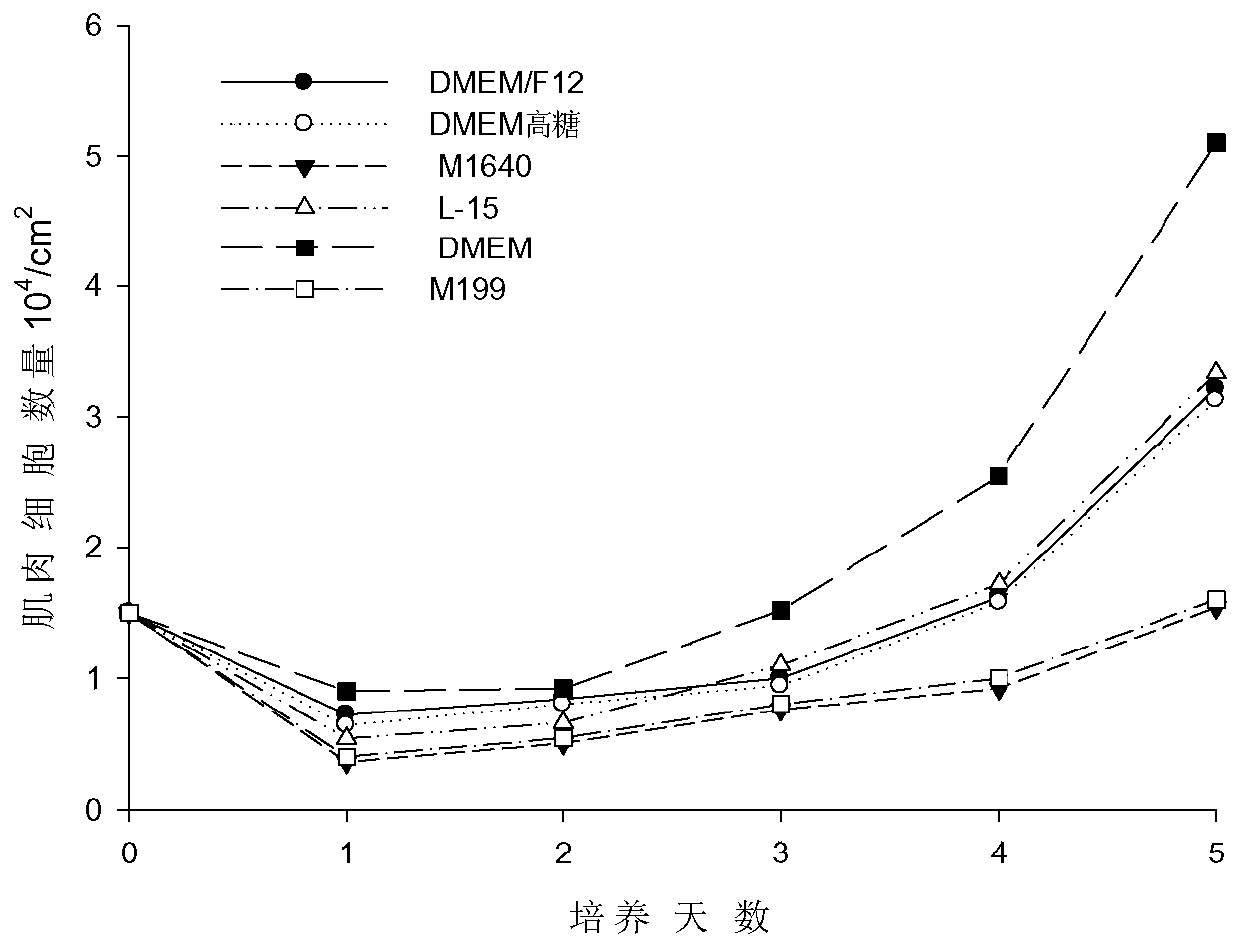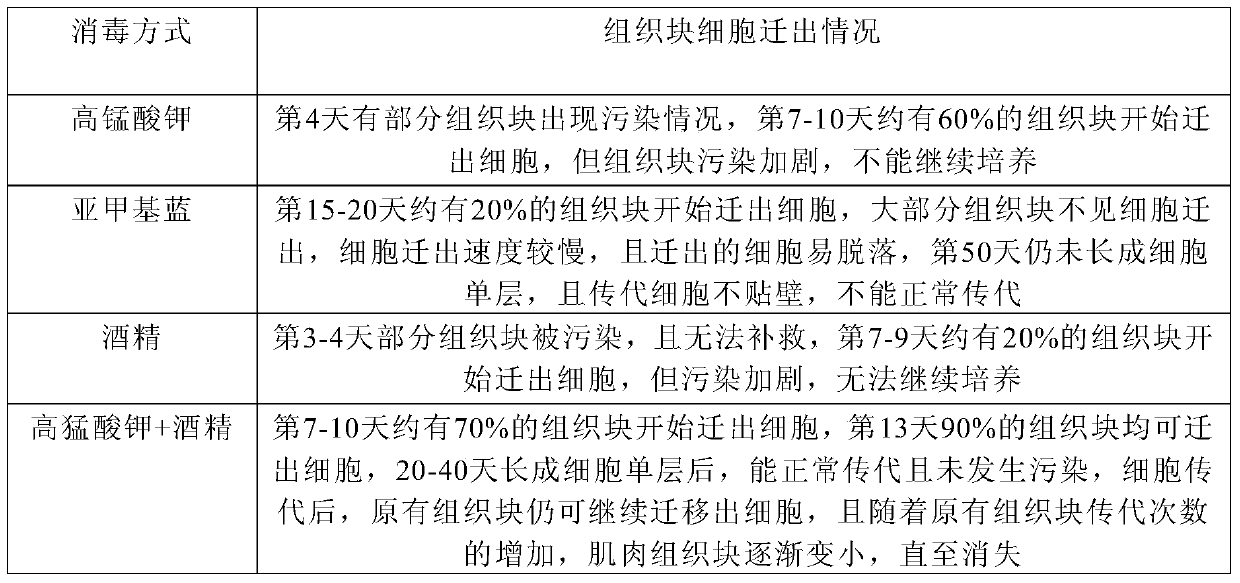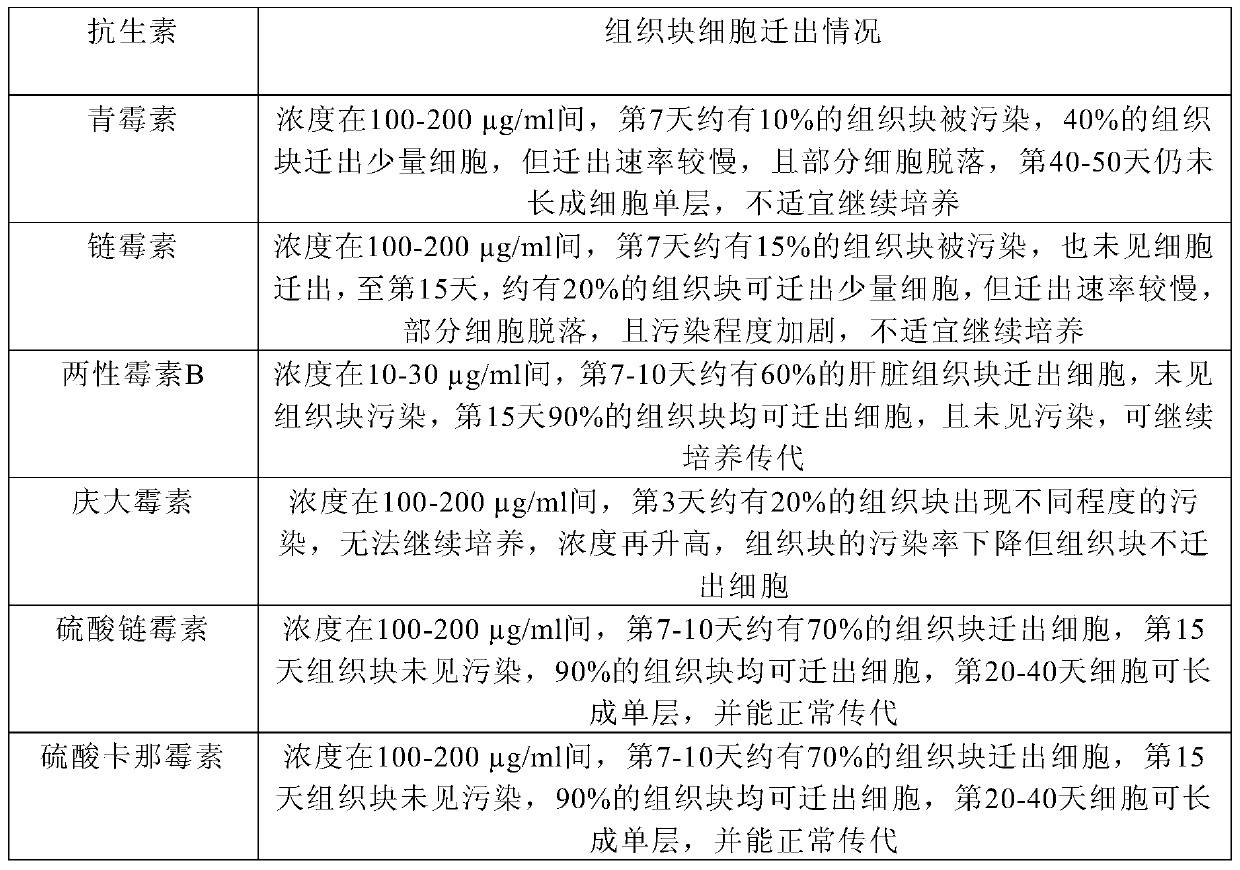A method for constructing muscle cell line of soft-finned lobster fish
A technology of the soft-finned new light lip fish and muscle cell line, which can be applied to artificial cell constructs, microorganism-based methods, animal cells, etc., can solve the problems of chromosomal abnormalities, prone to contamination, no similar reports, etc., and achieves easy operation. Easy operation, short culture time, and large cell volume
- Summary
- Abstract
- Description
- Claims
- Application Information
AI Technical Summary
Problems solved by technology
Method used
Image
Examples
Embodiment 1
[0030] 1. Preparation of disinfection solution and cell culture solution
[0031] Disinfectant solution: Add antibiotics to the balanced salt solution so that the concentration of kanamycin sulfate is 100 μg / ml, the concentration of streptomycin sulfate is 100 μg / ml, and the concentration of amphotericin B is 10 μg / ml.
[0032] Basal culture medium: add fetal bovine serum to DMEM medium, so that the fetal bovine serum accounts for 10% of the total volume.
[0033] Primary culture medium: add fetal bovine serum and antibiotics to DMEM medium, make fetal bovine serum account for 15% of the total volume, make the concentration of kanamycin sulfate 100 μg / ml, and the concentration of streptomycin sulfate 100 μg / ml , the concentration of amphotericin B was 10 μg / ml.
[0034] Subculture medium: add fetal bovine serum and antibiotics in DMEM medium, make fetal bovine serum account for 10% of total volume, make the concentration of kanamycin sulfate be 50 μ g / ml, the concentration of...
Embodiment 2
[0045] 1. Preparation of disinfection solution and cell culture solution
[0046] Disinfectant solution: Add antibiotics to the balanced salt solution so that the concentration of kanamycin sulfate is 150 μg / ml, the concentration of streptomycin sulfate is 150 μg / ml, and the concentration of amphotericin B is 20 μg / ml.
[0047] Basal culture medium: add fetal bovine serum to DMEM medium, so that the fetal bovine serum accounts for 10% of the total volume.
[0048] Primary culture medium: add fetal bovine serum and antibiotics to the DMEM medium, so that the fetal bovine serum accounts for 20% of the total volume, and the concentration of kanamycin sulfate is 150 μg / ml, and the concentration of streptomycin sulfate is 150 μg / ml , the concentration of amphotericin B was 20 μg / ml.
[0049] Subculture medium: add fetal calf serum and antibiotics in DMEM culture medium, make fetal calf serum account for 10% of total volume, make the concentration of kanamycin sulfate be 100 μ g / ml...
Embodiment 3
[0060] 1. Preparation of disinfection solution and cell culture solution
[0061] Disinfectant solution: Add antibiotics to the balanced salt solution so that the concentration of kanamycin sulfate is 200 μg / ml, the concentration of streptomycin sulfate is 200 μg / ml, and the concentration of amphotericin B is 30 μg / ml.
[0062] Basal culture medium: add fetal bovine serum to the DMEM medium, so that the fetal bovine serum accounts for 15% of the total volume.
[0063] Primary culture medium: add fetal bovine serum and antibiotics to DMEM medium, make fetal bovine serum account for 20% of the total volume, make the concentration of kanamycin sulfate 200 μg / ml, and the concentration of streptomycin sulfate 200 μg / ml , the concentration of amphotericin B was 30 μg / ml.
[0064] Subculture medium: add fetal bovine serum and antibiotics in DMEM medium, make fetal bovine serum account for 15% of total volume, make the concentration of kanamycin sulfate be 100 μ g / ml, the concentrati...
PUM
 Login to View More
Login to View More Abstract
Description
Claims
Application Information
 Login to View More
Login to View More - R&D
- Intellectual Property
- Life Sciences
- Materials
- Tech Scout
- Unparalleled Data Quality
- Higher Quality Content
- 60% Fewer Hallucinations
Browse by: Latest US Patents, China's latest patents, Technical Efficacy Thesaurus, Application Domain, Technology Topic, Popular Technical Reports.
© 2025 PatSnap. All rights reserved.Legal|Privacy policy|Modern Slavery Act Transparency Statement|Sitemap|About US| Contact US: help@patsnap.com



